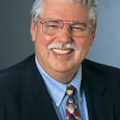MARKET WATCH: Bullish inventories pull up oil prices
The front-month US benchmark crude was up 1.1% in the New York market amid mixed trading May 8, following a bullish report on US inventories.
The SIG Oil Exploration & Production Index and the Oil Service Index climbed with the equity market, which “refused to lose momentum yesterday, hitting its fifth straight record high on a sleepy trading session,” said analysts in the Houston office of Raymond James & Associates Inc.
“The Standard & Poor’s 500 Index gained 0.4% on the day, led by the technology sector as earnings season begins to come to a close. On the energy side, shares rode the broader market rally and received an additional boost from a bullish Department of Energy inventories update,” they said. However, crude, natural gas, and other market futures were down in early trading May 9.
US inventories
DOE’s Energy Information Administration reported the injection of 88 bcf of natural gas into US underground storage in the week ended May 3, up from Wall Street’s consensus for an 86 bcf increase. That raised working gas in storage to 1.865 tcf, down 737 bcf from the comparable year-ago level and 99 bcf below the 5-year average.
EIA earlier said commercial US benchmark crude inventories inched up a minimal 200,000 bbl to 395.5 million bbl last week—just a fraction of Wall Street’s consensus for a 2 million bbl increase—following a 6.7 million bbl jump the previous week. Gasoline stocks decreased 900,000 bbl to 215.1 million bbl, exceeding analysts’ expectations of a 500,000 bbl decline. Finished gasoline inventories decreased while blending components increased last week. US inventories of distillate fuel climbed 1.8 million bbl to 117.6 million bbl; the market anticipated only a 500,000 bbl gain (OGJ Online, May 8, 2013).
Raymond James analysts said, “This week's petroleum inventories update was modestly bullish. The increase in ‘Big Three’ inventories of 1.1 million bbl was smaller than the consensus forecast for a build of 2 million bbl. The larger-than-expected build in distillates was not enough to offset a smaller build in crude and larger draw in gasoline relative to consensus. The build in crude below expectations came as a result of a decrease in imports (down 3%), better refinery utilization (up 3.1%), and higher demand (up 6.5%). Cushing, Okla., inventories declined for the second consecutive week, to 49.1 million bbl, but are still 5 million bbl higher than this time last year.”
Energy prices
The June contract for benchmark US sweet, light crudes gained $1 to $96.62/bbl May 8, more than wiping out its loss in the previous session on the New York Mercantile Exchange. The July contract increased 99¢ to $96.85/bbl. On the US spot market, West Texas Intermediate at Cushing was up $1 to $96.62/bbl.
Heating oil for June delivery declined 1.3¢ to $2.91/gal on NYMEX. Reformulated stock for oxygenate blending for the same month rose 2.04¢ to $2.85/gal.
The June natural gas contract regained 5.8¢ to $3.98/MMbtu on NYMEX. On the US spot market, gas at Henry Hub, La., continued to retreat, down 1.2¢ to $3.87/MMbtu.
In London, the June IPE contract for North Sea Brent lost 6¢ to $104.34/bbl. Gas oil for May dropped $4.75 to $863.75/tonne.
The Organization of Petroleum Exporting Countries’ Vienna office was closed May 9, with no price update for its basket of 12 benchmark crudes.
Contact Sam Fletcher at [email protected].
About the Author

Sam Fletcher
Senior Writer
I'm third-generation blue-collar oil field worker, born in the great East Texas Field and completed high school in the Permian Basin of West Texas where I spent a couple of summers hustling jugs and loading shot holes on seismic crews. My family was oil field trash back when it was an insult instead of a brag on a bumper sticker. I enlisted in the US Army in 1961-1964 looking for a way out of a life of stoop-labor in the oil patch. I didn't succeed then, but a few years later when they passed a new GI Bill for Vietnam veterans, they backdated it to cover my period of enlistment and finally gave me the means to attend college. I'd wanted a career in journalism since my junior year in high school when I was editor of the school newspaper. I financed my college education with the GI bill, parttime work, and a few scholarships and earned a bachelor's degree and later a master's degree in mass communication at Texas Tech University. I worked some years on Texas daily newspapers and even taught journalism a couple of semesters at a junior college in San Antonio before joining the metropolitan Houston Post in 1973. In 1977 I became the energy reporter for the paper, primarily because I was the only writer who'd ever broke a sweat in sight of an oil rig. I covered the oil patch through its biggest boom in the 1970s, its worst depression in the 1980s, and its subsequent rise from the ashes as the industry reinvented itself yet again. When the Post folded in 1995, I made the switch to oil industry publications. At the start of the new century, I joined the Oil & Gas Journal, long the "Bible" of the oil industry. I've been writing about the oil and gas industry's successes and setbacks for a long time, and I've loved every minute of it.